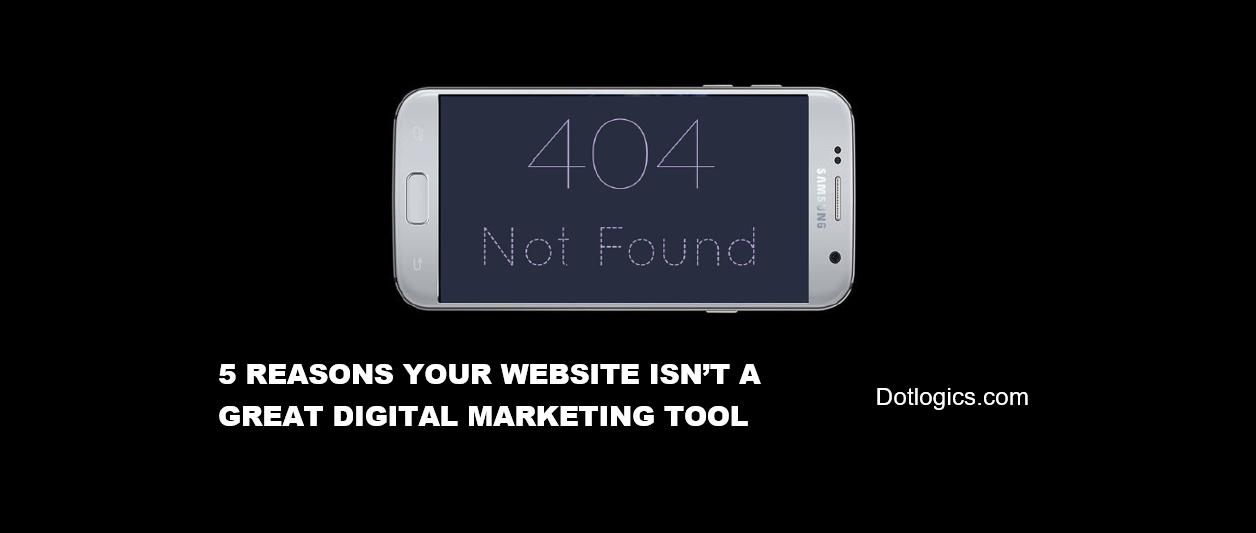
A fine-tuned website can increase brand awareness, attract traffic, boost sales, enhance customer experience and act as the core of your online marketing efforts.
Is your website an asset to your company, like it should be, or is it missing the mark and costing your business?
To help answer that question, here are seven reasons why your website may not be helping you to reach your digital marketing goals.
It's Non-Responsive
These days, every business website should be functional across all browsers, platforms and screen sizes. And with mobile now accounting for most web traffic and Google's algorithm giving an advantage to mobile-friendly sites, it's essential that your website be optimized for mobile devices—smartphones and tablets.
What to Do About It: Use Google Analytics to see how many users are visiting your website on mobile devices and how many of them are bouncing. If the mobile bounce rate is significantly higher than desktop traffic, try Google's Mobile-Friendly Testing Tool. Ultimately, if your site is not friendly to mobile users, redesign it with a responsive grid system. This will allow you to reach a much larger audience and boost your search engine optimization (SEO).
Poor Landing Page and Navigation Design
Every landing page (or any other page on your site) that doesn't follow best practices is hurting your business, so all pages should be optimized to help your website maximize performance. Landing pages that ask for too much information, have no compelling headline, include too much text, have too many calls-to-action (CTA) and lack credibility are doomed to fail.
Don't forget that navigation matters more than you think. Awkward or poorly-thought-out navigation can confuse your visitors and reduce conversions.
What to Do About It: Address navigation issues by using Google's Page Analytics plugin to see your visitors your navigation structure, then remove or consolidate sections that receive significantly lower click rates. Instead of placing your navigation in an unusual place (i.e. on the side or below the header), keep it in the usual, familiar place to lower bounce rates, encourage more page visits and promote higher conversions. Don't confuse visitors with a navigation menu filled with every product or service you offer. Instead, opt for a small number clearly-labeled options that are most useful to users.
Errors Are Causing Web Traffic Jams
Even most well-designed website is useless if it can't be found by users. A properly-optimized site makes it easy for Google and other search engines to crawl and index its pages, so that they show up in search queries and attract visitors.
What to Do About It: Use Google Webmaster Tools to sniff out any crawl errors that prevent visitors from finding different areas of your website. For most site owners, the most common problem that needs to be addressed is implementing 301 redirects for all existing 404 (page not found) errors.
You Don't Have a Blog (or It's Not Effective)
Even in an age where social media and email marketing reign supreme, a brand or company blog is still a fast, affordable and effective way to distribute content to inform, educate and engage your readers, allowing them to celebrate (and share) it. Not having a blog or having one with content that doesn't connect with your readers will put a damper on traffic, conversion rates and even lead generation.
What do Do About It: If you don't have a blog, set one up on your website and start sharing written content, images and videos. For existing blogs, use your dashboard to review the number of views and CTA click-throughs for each post. Dig into analytics to collect metrics data, and ask your readers to leave feedback using applications like Feedbackify or Qualaroo.
You Lack an SEO Strategy
Believe it or not, 75% of web users do not venture beyond the first page of search results. So, without a solid SEO strategy, you'll continue to miss out on a large number of potential visitors. That, along with the fact that Google's algorithm has made keyword stuffing useless (and even detrimental) means you'll need to treat SEO as an ongoing process,
What do Do About It: Focus on formulating a search engine optimization strategy centered around things such as detailed keyword research, backlinking and tagging, and integrated social media.
Conclusion
While by no means exhaustive, use this five-point list as a starting point for evaluating problems with your website. Keeping pace with technology and the competition means evaluating your site every 18–24 months to determine if any tweaks are required to keep it functioning as a vital part of a well-oiled online marketing machine.
Let's Get to Work.
Have an unsolvable problem or audacious idea?
